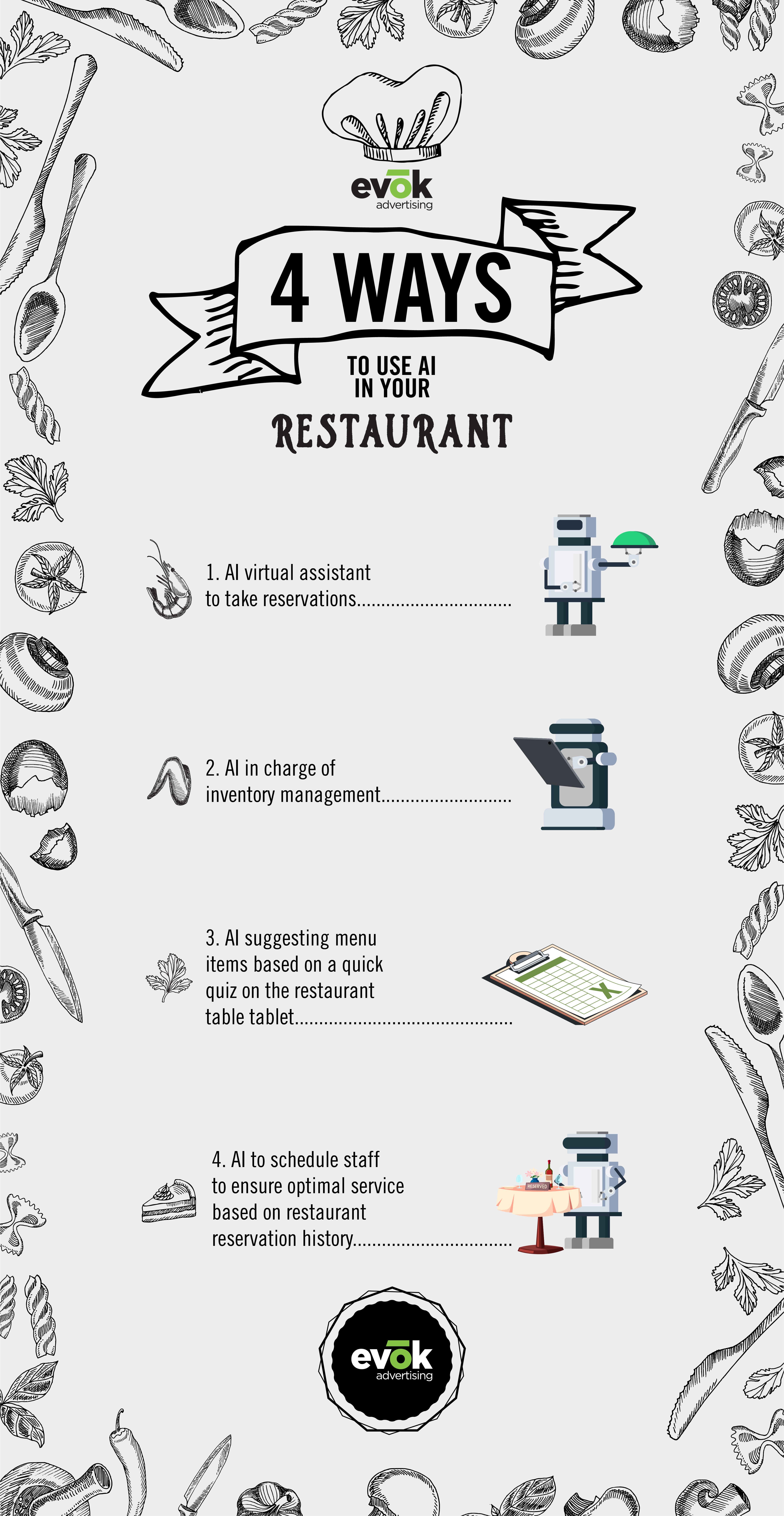
The Future of Restaurant Marketing: Marketing & Consumer Trends to Watch for in 2024
As 2024 approaches, seismic shifts in consumer preferences and technology promise to fundamentally transform restaurant marketing. This coming year will test the agility and foresight of restaurants as they adapt strategies to appeal to evolving dining habits. Mastering key 2024 trends will allow brands to get ahead of competition and cement customer loyalty.

Health and Wellness Trends
Within the fast-casual market, a significant transformation is underway, primarily driven by the rise of health-conscious consumers. This evolution in dining preferences is not just a trend but signifies a deeper, more systemic shift toward sustainable and nutritious dining experiences.
Restaurants are actively responding to this change, with menu innovations that feature an array of health-forward and plant-based options. These offerings cater to a spectrum of dietary preferences, from vegan and vegetarian to gluten-free, focusing on nutrient-rich, whole foods. Beyond the menu, this wellness trend is influencing restaurant designs, which are increasingly incorporating elements like natural light, plants, and soothing colors to create a health-focused atmosphere.
Ingredient sourcing and transparency are other critical aspects of this trend. Today’s diners demand to know the origin of their food, emphasizing organic, non-GMO, and ethically sourced ingredients. In response, restaurants are forging closer ties with local farms and suppliers, ensuring their ingredients meet these high standards.
Educational marketing is also taking center stage, with restaurants providing detailed nutritional information through various channels, including menus, websites, and apps. This approach aligns with the increasing consumer desire for knowledge about the health benefits of their food choices.
In some innovative cases, dining experiences are being merged with wellness activities. Concepts like yoga cafes exemplify this integration, offering a holistic approach to health and well-being. Additionally, technology is playing a vital role, with apps and digital platforms offering personalized dietary tracking and suggestions, enhancing the customer’s wellness journey.
Lastly, the sustainability aspect of this trend cannot be overstated. Restaurants adopting eco-friendly practices are not only appealing to health-conscious consumers but are also contributing to a more environmentally responsible approach to dining. The health and wellness trend in the restaurant industry is a multifaceted movement more than a fad. It’s reshaping how restaurants operate, market themselves, and even how they design their spaces, reflecting a broader shift in societal values towards health, nutrition, and sustainability.
Consumer Preferences: Value and Convenience
Facing economic challenges and rising food costs, consumers are increasingly valuing convenience and economy in their dining choices, favoring home dining over traditional restaurant experiences. This trend has pushed restaurants to enhance take-out and delivery services, optimizing online ordering systems for efficiency and user-friendliness. Features like timely delivery and maintaining food quality in transit are now focal points.
Digital ordering platforms are evolving to offer order tracking and personalized recommendations, streamlining the ordering process. Concurrently, menu pricing strategies are being revised to introduce budget-friendly options and family meal deals, addressing customers’ heightened sensitivity to value.
The innovation extends to meal kits and DIY meal options for home cooking, enabling customers to enjoy restaurant-quality meals at home. These kits include pre-measured ingredients with cooking instructions, adding convenience and an element of engagement to the dining experience.
Additionally, loyalty programs are being revamped to offer more attractive rewards and discounts, fostering customer loyalty and encouraging repeat business. These strategies highlight the restaurant industry’s adaptability and commitment to meeting changing consumer needs.
Innovation in Restaurant Operations
Artificial Intelligence (AI) is significantly transforming restaurant operations, enhancing efficiency and customer experience. Key opportunities for AI integration include:
1. Customer Service Enhancements: AI-powered chatbots and virtual assistants are being used for customer queries, reservations, and feedback collection, providing a seamless customer service experience.
2. AI in Kitchen Operations: AI is being used for precision cooking, inventory management, and predicting order volume to reduce food waste and optimize kitchen efficiency.
3. Personalized Dining Experiences: AI-driven data analysis is enabling restaurants to offer personalized dining experiences, suggesting menu items based on customer preferences and past orders.
4. Staffing and Scheduling Optimization: AI tools are being used for efficient staffing, predicting busy periods, and scheduling staff accordingly to ensure optimal service.
5. Marketing and Customer Insights: AI is crucial in analyzing customer data to understand dining habits and preferences, which informs targeted marketing strategies and menu development.
Marketing Trends
In 2024, the intersection of AI and automation with restaurant marketing is expected to create significant changes in how restaurants connect with their customers. Sophisticated guest data platforms, driven by AI, will enable restaurants to precisely tailor their marketing messages and offers to individual customer preferences and behaviors. This personalization is crucial in creating more meaningful and effective customer interactions.
Furthermore, the growing popularity of gamified loyalty programs is set to add a new dimension to customer engagement. These programs, offering rewards and incentives through interactive and entertaining methods, are not only enhancing customer experience but also fostering repeat business and loyalty.
The impact of short-form video content on social platforms like TikTok and Instagram is becoming increasingly significant. These platforms offer a dynamic and engaging way for restaurants to showcase their brand, culinary creations, and unique dining experiences, appealing to a younger, digitally native audience. This content strategy is not just about visibility; it’s about creating a narrative that resonates with viewers, turning them into loyal customers and brand advocates.
Overall, these marketing trends reflect a broader shift towards more interactive, personalized, and digitally-driven strategies, aligning with evolving consumer behaviors and preferences in the digital age. As restaurants embrace these trends, they are positioned to strengthen their brand identity, enhance customer loyalty, and stay competitive in an ever-changing market landscape.
Economic and Industry Insights
As the restaurant industry emerges from the challenges of an inflationary period, there’s a renewed consumer enthusiasm for dining experiences. This resurgence is partly fueled by the stabilization of food prices and wages, providing relief for both restaurant operators and consumers. This economic recovery phase is sparking new investments in various sectors of the industry.
Restaurants are increasingly investing in advanced technologies to enhance customer experience and operational efficiency. These technologies range from AI-driven order systems to sustainable energy solutions in kitchen operations. There’s also a notable shift towards menu innovation, with restaurants experimenting with diverse, global cuisines to cater to an adventurous consumer base seeking new culinary experiences.
Furthermore, restaurant operators are exploring expansion strategies, including the opening of new locations and venturing into untapped market segments. This expansion is not limited to physical spaces but also includes online delivery services and virtual kitchens, capitalizing on the growing demand for convenience.
The diversity of the consumer base is also driving restaurants to explore new market segments and cuisines. There’s an increasing demand for authentic, ethnic cuisines and fusion foods, reflecting the global nature of modern dining preferences. This trend is encouraging restaurants to diversify their offerings and experiment with new flavors and cooking techniques.
Overall, the economic recovery and stabilization in the restaurant industry are paving the way for innovation, expansion, and a richer, more diverse culinary landscape.
Sustainability and Eco-Friendliness
Ethical ingredients sourcing addresses the climate impact of food systems. Energy/water conservation initiatives signal corporate responsibility. Composting, smart waste management and recyclable transport packaging Type show environmental dedication. Farm-to-table partnerships support local producers. Customers will reward sustainability measures with loyalty.
Emerging Restaurant Formats
Pop-ups and ghost kitchens gain traction as low-risk new brand testing grounds. Experiential dining capitalizes on Instagrammable moments. Subscriptions for meal kits/prepared food target convenience-seekers. Chef collaborations allow culinary creativity. Off-peak discounts drive traffic during lulls. Data-driven innovations will power winning concepts.
Conclusion
Agility and insight are key for restaurants thriving in 2024’s transformative landscape. Grasping health trends, tech innovation, shifting economics, and sustainability best practices allows connection with patrons. The brands moving quickly to implement emerging formats and experiences will gain competitive edge. Restaurants that rigidly cling to past strategies risk extinction.